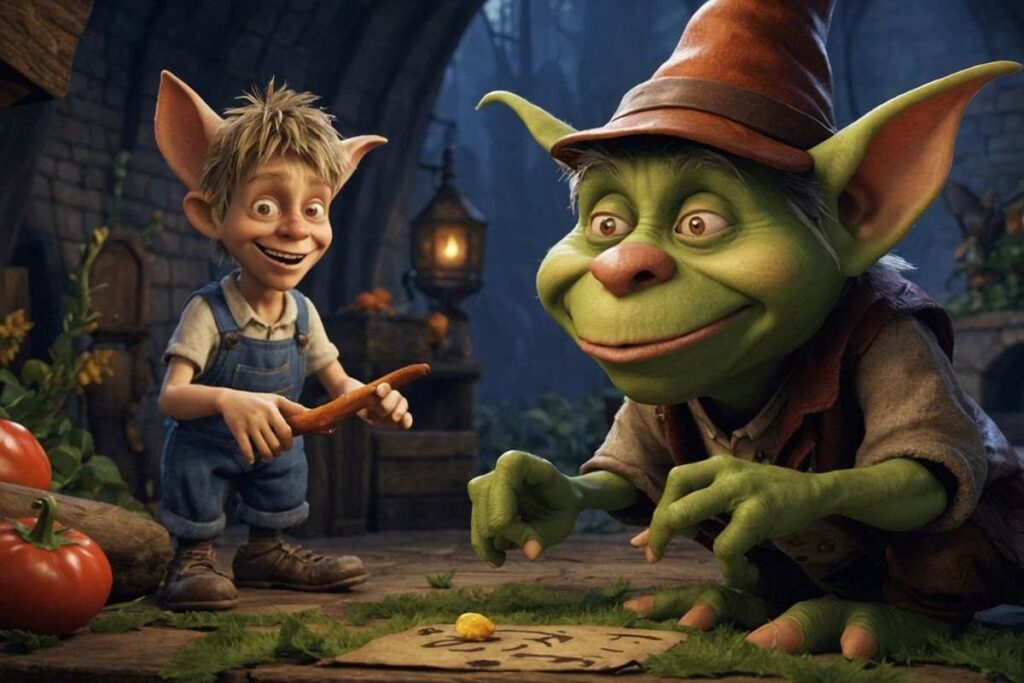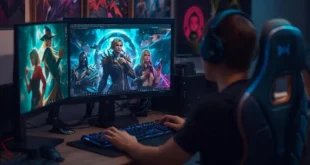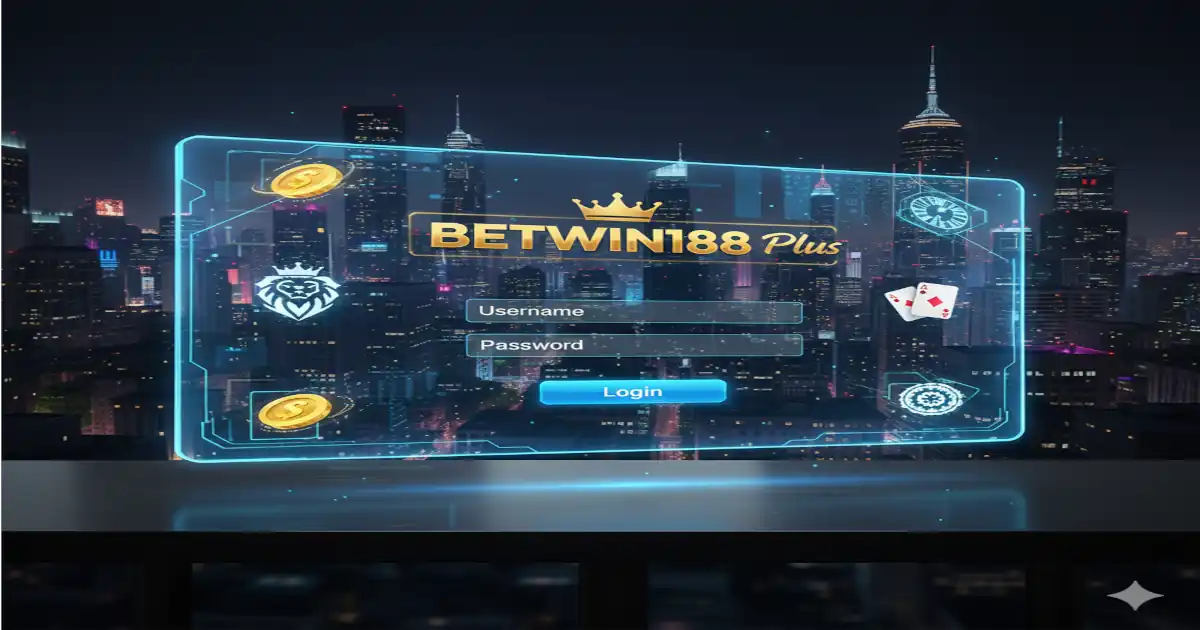Introduction
In 1993, Adventure Soft released a game that would become a cornerstone of the point-and-click adventure genre: “Simon the Sorcerer.” Set in a whimsical fantasy world, the game stood out for its captivating storyline, memorable characters, and delightful humor. Over the years, it has garnered a cult following, influencing numerous adventure games and securing a lasting legacy in the gaming industry. This article delves into what makes “Simon the Sorcerer” a beloved classic, exploring its narrative, gameplay mechanics, charm, cultural impact, and more.
Storyline and Setting
“Simon the Sorcerer” transports players to a fantastical realm brimming with magic, mythical creatures, and enchanting landscapes. The story follows a seemingly ordinary teenager, Simon, who is whisked away to a mysterious world after discovering a magical book. His mission? To rescue the wizard Calypso from the sinister sorcerer Sordid. Along the way, Simon encounters eccentric characters, from talking animals to wizards and trolls, each contributing to the game’s rich tapestry of storytelling.
The game’s setting is meticulously crafted, from the bustling wizard town to the eerie dark forest, each location bursting with detail and personality. The narrative unfolds through witty dialogue, clever puzzles, and engaging cutscenes, making every step of Simon’s journey a joy to experience.
Gameplay Mechanics
“Simon the Sorcerer” employs the traditional point-and-click adventure style, a staple of 1990s PC gaming. Players guide Simon through various environments, interacting with objects, conversing with characters, and solving puzzles to advance the story. The interface is intuitive, with simple mouse controls allowing players to explore, collect, and combine items to overcome obstacles.
What sets “Simon the Sorcerer” apart is its seamless integration of gameplay mechanics with storytelling. Puzzles are not merely challenges to be overcome but integral parts of the narrative that deepen the player’s immersion in the game world. Each puzzle feels like a natural extension of Simon’s adventure, from deciphering ancient runes to concocting magical potions.

Humor and Charm
One of the defining features of “Simon the Sorcerer” is its humor. The game has witty dialogue, playful banter, and laugh-out-loud moments that endear players to its quirky characters. Simon himself is a charming protagonist whose sarcastic remarks and humorous observations make him instantly likable.
Memorable moments abound in “Simon the Sorcerer,” from Simon’s interactions with a grumpy, talking tree to his attempts at casting spells with often hilarious results. This humor, combined with the game’s vibrant art style and lively animations, creates an atmosphere of lighthearted fun that keeps players engaged from start to finish.
Puzzle Design
“Simon the Sorcerer” puzzles blend logic, creativity, and exploration. They range from simple tasks, like finding a key to unlock a door, to more intricate challenges, such as navigating a maze or deciphering a complex spell. The game balances challenge and accessibility, ensuring that puzzles are engaging without being overly frustrating.
What makes the puzzles particularly compelling is their relevance to the story. Each puzzle solved brings Simon closer to his goal, making players feel a sense of accomplishment and progress. The variety of puzzles also keeps the gameplay fresh and exciting, encouraging players to think outside the box and experiment with different solutions.
Graphics and Sound
For its time, “Simon the Sorcerer” boasted impressive graphics with detailed backgrounds, vibrant colors, and expressive character animations. The art style perfectly complements the game’s whimsical tone, bringing the fantasy world to life in a visually appealing way.
The sound design is equally noteworthy, featuring a memorable musical score that enhances the game’s magical atmosphere. Voice acting, though limited by the technology of the era, adds personality to the characters, with Simon’s voiceovers being particularly well-executed. Sound effects, from the rustling of leaves to casting spells, further immerse players in the game’s enchanting world.
Cultural Impact
“Simon the Sorcerer” left an indelible mark on the adventure gaming genre. It was a trailblazer combining humor with engaging storytelling, setting a precedent for future titles. The game’s success inspired a wave of point-and-click adventures, influencing contemporaries and successors.
The game’s influence can be seen in titles like “Monkey Island,” “Day of the Tentacle,” and “Grim Fandango,” which similarly blend humor with intricate puzzles and immersive narratives. More modern adventure games, such as “Broken Age” and “Thimbleweed Park,” also owe a debt to “Simon the Sorcerer,” drawing on its legacy to create experiences that resonate with both new and veteran players.
Reception and Reviews
Upon its release, “Simon the Sorcerer” garnered positive reviews from critics and players alike. Praise was directed at its engaging storyline, clever puzzles, and charming humor. Critics lauded the game’s visual and auditory design, noting that it stood out among its peers for its polish and attention to detail.
Though not without flaws—some players found certain puzzles overly obtuse—the overall reception was overwhelmingly positive. Publications such as GameSpot commended the game, with one critic stating, “Simon the Sorcerer is a delightful romp through a whimsical world filled with clever puzzles and hilarious dialogue. A must-play for fans of the genre.”
Legacy and Continued Influence
“Simon the Sorcerer” has left a lasting legacy in the gaming world. It spawned several sequels, each building on the original’s success and further cementing its place in gaming history. The game’s influence extends beyond its immediate successors, impacting the broader landscape of adventure games.
In recent years, the resurgence of interest in retro gaming has brought “Simon the Sorcerer” back into the spotlight. Remakes and re-releases have introduced the game to a new generation of players, while fan communities keep the spirit of the game alive through forums, fan art, and modding projects.

Conclusion
“Simon the Sorcerer” remains a beloved classic in the annals of PC gaming. Its captivating storyline, memorable characters, innovative gameplay mechanics, and enduring humor have enchanted players for decades. The game’s influence on the adventure gaming genre is undeniable, paving the way for future titles and leaving an indelible mark on gaming culture.
For those who have yet to experience the magic of “Simon the Sorcerer,” there has never been a better time to dive into this whimsical world. And for those who fondly remember Simon’s adventures, revisiting this classic will surely bring a smile and a sense of nostalgia for the golden age of adventure gaming.
Frequently Asked Questions (FAQ’s)
1. What is “Simon the Sorcerer”?
“Simon the Sorcerer” is a classic adventure game released in 1993. It follows the story of a teenager named Simon who is transported to a magical world and must become a capable sorcerer to overcome various challenges.
2. Who developed “Simon the Sorcerer”?
Adventure Soft, a UK-based company known for contributing to the adventure gaming genre, developed the game.
3. What platforms is “Simon the Sorcerer” available on?
Originally released for MS-DOS and Amiga, “Simon the Sorcerer” has since been re-released on various modern platforms, including Windows, macOS, iOS, and Android.
4. Can I play “Simon the Sorcerer” on modern systems?
Thanks to re-releases and ports to modern platforms, “Simon the Sorcerer” can be played on contemporary systems.
5. What makes “Simon the Sorcerer” unique?
The game is renowned for its engaging storyline, witty humor, memorable characters, and innovative mechanics that set new standards for adventure games.
6. How does Simon’s character evolve throughout the game?
Simon starts as a sarcastic teenager who is reluctant to embrace his role as a sorcerer. As the story progresses, he matures and becomes a capable and determined protagonist.
7. Who are the main antagonists in “Simon the Sorcerer”?
The primary antagonist is Sordid, a malevolent sorcerer intent on dominating the magical world. His rivalry with Calypso, the wise old wizard, and his sinister plans drive the game’s central conflict.
8. What kind of puzzles can players expect in the game?
Players can expect a variety of clever and challenging puzzles that require logical thinking and keen observation to solve.
9. How was “Simon the Sorcerer” received by critics?
The game received widespread acclaim for its engaging storyline, clever puzzles, and humorous dialogue, earning high scores from various gaming publications.
10. Are there sequels to “Simon the Sorcerer”?
Yes, “Simon the Sorcerer” has spawned several sequels, continuing Simon’s adventures in the magical world.
11. What is the cultural impact of “Simon the Sorcerer”?
The game has had a lasting impact on the adventure gaming genre, inspiring subsequent titles and influencing its development with its innovative mechanics and storytelling.
12. Are there fan communities dedicated to “Simon the Sorcerer”?
Yes, there are dedicated fan communities that keep the game alive by creating fan art, mods, and unofficial sequels, celebrating its enduring appeal.
13. Has “Simon the Sorcerer” received any awards?
The game has received several awards and accolades for its writing, voice acting, and overall design, further cementing its status as a classic in the genre.
14. Are any developer insights available for “Simon the Sorcerer”?
Yes, insights from the developers reveal the creative process behind the game and the challenges they face. Their dedication to crafting a unique and engaging experience is evident in its enduring appeal.
15. Why should I play “Simon the Sorcerer” today?
Playing “Simon the Sorcerer” offers a nostalgic journey into the history of adventure gaming. Its engaging storyline, witty humor, challenging puzzles, and memorable characters ensure a timeless and enjoyable experience for new players and seasoned fans.
 Akedo Warriors gaming and general site
Akedo Warriors gaming and general site 


